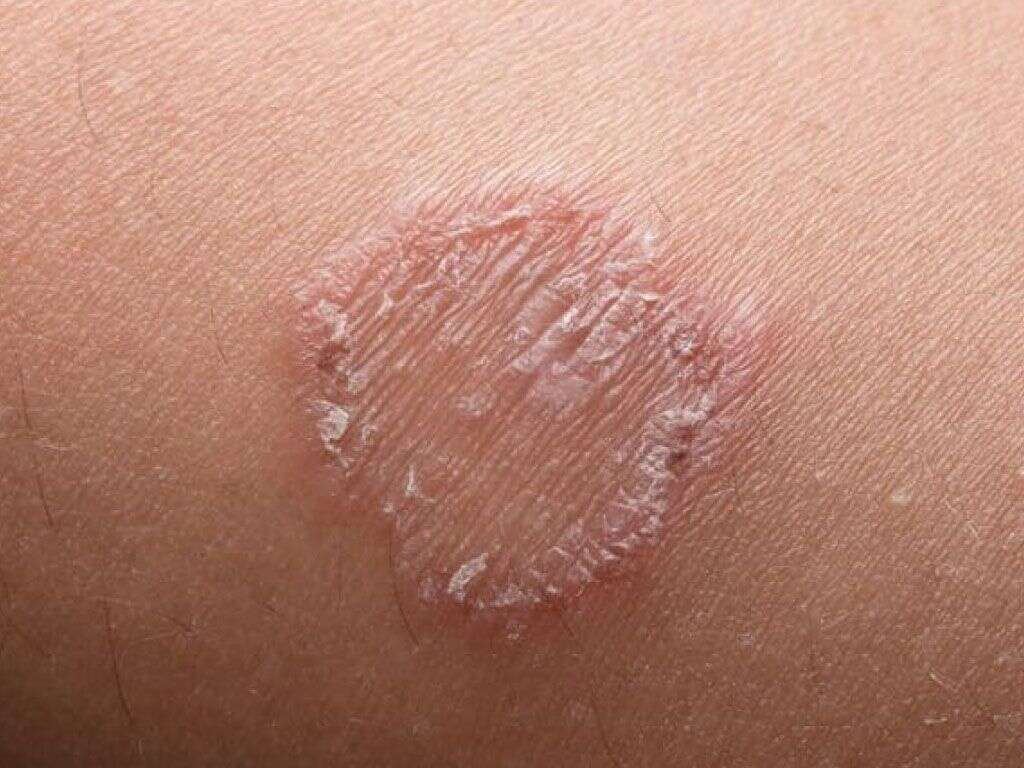What Is Ringworm Symptoms?
Fungi are a form of life that is quite different to flora and fauna. They are very common and there are countless different varieties, ranging from microscopic organisms to very large living structures. For the most part they are completely harmless, and in some cases, they can even be beneficial to us.
Some types of fungi can cause an infection, however. This includes some common skin infections, one of which is ringworm. It is a very common condition and it is also, thankfully, harmless. Speak with a doctor and they will be able to give you something that will help to clear up the infection in no time at all.

1. Tinea Corporis
Ringworm, which is known as tinea corporis in the medical field, is a relatively common condition that is found in many parts of the world. It is particularly common in warm climates. While it can be very irritating, and unsightly, the condition is nearly always harmless and is fairly easy to treat.
The condition gets its name from its appearance, which is typically a red ring-like rash on the skin. The condition has nothing to do with worms, however, as ringworm is actually the result of a fungal infection. It can be transmitted in a number of ways, including from person to person.

2. Causes
There are a number of different fungi that can be responsible for a case of ringworm. Among the most common are microsporum, and Trichophyton, but there are more than 40 different types of fungi that can cause the condition. The fungi typically thrive in warm and humid environments.
The condition is closely related to other types of fungal infection such as jock itch and athlete’s foot. Anybody can develop ringworm if they are exposed to the appropriate fungi, but it is more common in people that have a weakened immune system. There are several ways in which somebody might be exposed to the virus.

3. Person to Person
Ringworm is caused by fungi that live in the outer layer of the skin. As such, it is often exposed to the outside world, and to other people. This means that, in many cases, a person will have picked up an infection from another person. Even just coming into contact with the infected area can be enough for a transmission to take place.
Some animals, including cats and dogs, are also prone to ringworm infections. We will also often not be aware they have it because the infection will be covered by fur. Plus, of course, we will often spend a lot of time petting our pets, making transmission more likely.

4. Objects
If an infected person was to come into contact with an object, then that object can also become contaminated with the fungus. The fungus can then be transmitted to any other people that also come into contact with that object.
While this can happen with just about any surface, it is more likely to happen when somebody shares certain items with another person. This includes things like towels, combs, bedding, and clothing. Thus, it makes sense to avoid sharing such items where possible. There is also a risk of infection from contact with contaminated soil, but this happens in a very small number of cases.

5. Symptoms
The main symptom of ringworm is the distinctive rash from which it takes its name. It will typically be a ring-shaped rash with a red circumference and a lighter interior. The rash is often scaly in texture, and is usually located on the arms, legs, trunk, and buttocks.
The rash will often be very itchy, but patients are encouraged to scratch it as little as possible. The area is usually flat, although it may be slightly raised in some cases. Rings may overlap if more than one area is infected, and blisters may develop in some cases. There is a chance of infections if the skin is broken through scratching.

6. Who’s at Risk
Anybody can develop ringworm if they are exposed to certain fungi. As mentioned, however, it is more likely to take a hold in people that have a weakened immune system, and this means it is more common in people that have HIV/AIDS. Being around other infected people and/or animals will also increase an individual’s chances of catching the disease.
People that share towels and other items are also more likely to catch ringworm. The same goes for people that take part in contact sports. Wearing tight clothing is another factor that can make a person more likely to develop ringworm.

7. Complications
Ringworm is fairly straight forward to treat, so further complications are unlikely. Complications will arise in a small number of cases, however, and one of the most common is infections. These tend to be caused when the skin is broken by itching, which may allow bacteria and other pathogens to enter the body.
If it is not treated in time, then ringworm can also cause scarring in a small number of cases, and hair loss in the area is also a possibility. Wearing shoes can also be a problem after severe cases on the feet. Rarely, ringworm may spread to below the surface of the skin, and this can result in some very serious diseases.

8. Prevention
It is all but impossible to completely prevent exposure to the fungi that can cause ringworm. However, we can make it less likely that it will happen by following some fairly straight forward advice. One of these is to avoid sharing items like towels and brushes with other people.
Keeping clean as much as possible can also help to prevent infections, and be extra sure to shower immediately after taking part in contact sports. You should also try to stay in a cool, dry environment for as long as possible, and wearing loose clothing will also help. Also try and avoid contact with people or animals that you suspected to be infested.

9. Diagnosis
The rash that is caused by ringworm is very distinctive, meaning it is usually easy to recognize just by looking at it. What’s more is that it is a fairly common condition, giving doctors even more confidence that ringworm will be the cause. This is usually enough for doctors to diagnose the condition and prescribe appropriate treatment.
Some doctors might feel the need to get a more conclusive diagnosis, however. This is usually achieved by taking some skin scrapings which can then be examined further. If you do have any other symptoms, then make sure to let your doctor know to help them come to the right diagnosis.

10. Treatment
As mentioned, treatment for ringworm is usually a straightforward process. Over the counter creams and other medications are usually all that is needed. These are readily available from pharmacies and many people may not even feel the need to speak with a doctor about their symptoms.
Over the counter treatments are not always effective, however, meaning that stronger, prescription treatments are sometimes needed. If you do have a case of ringworm that won’t go away with treatment, you should make sure to speak with your doctor about it. You should also speak with a doctor if the condition is particularly severe.











